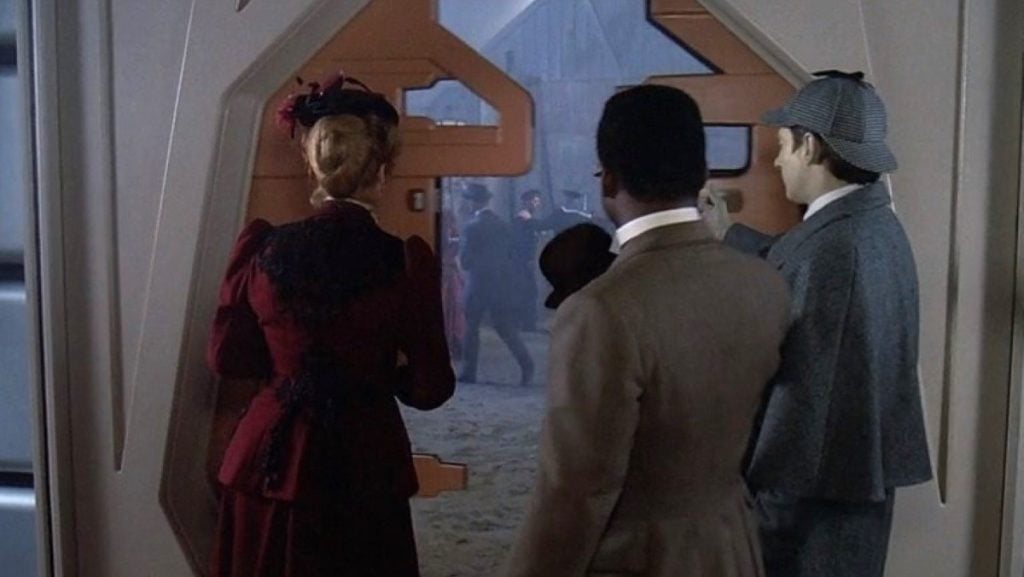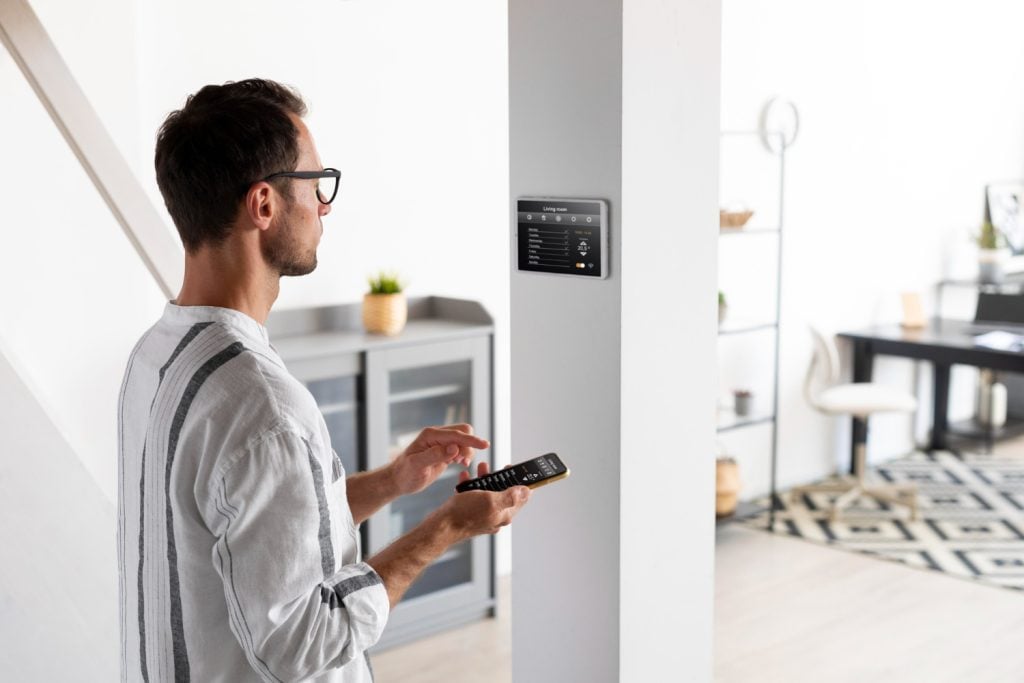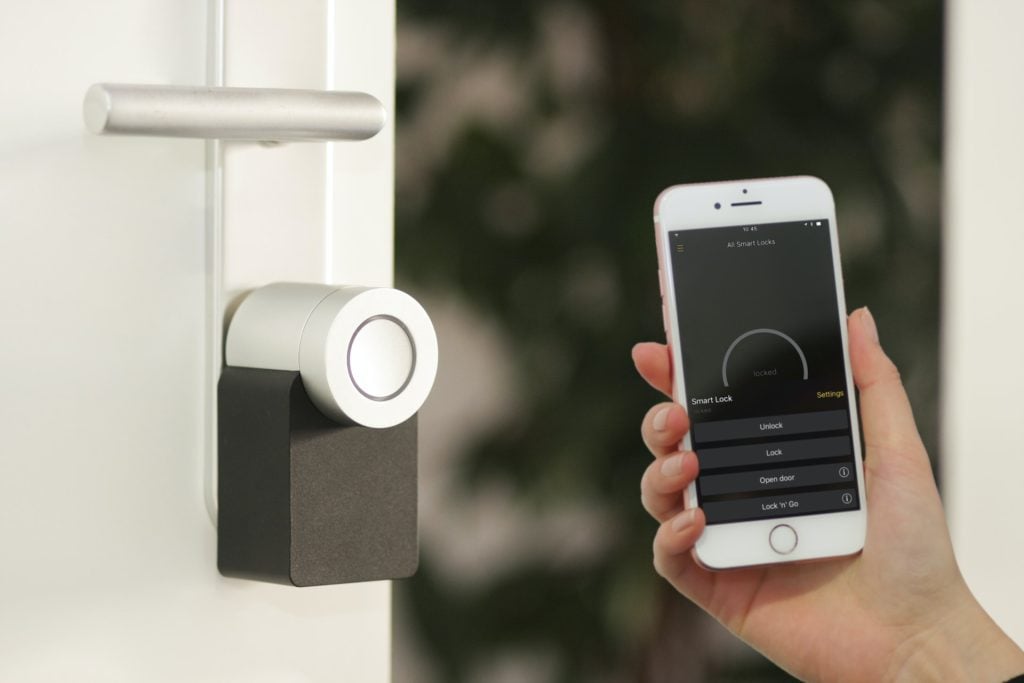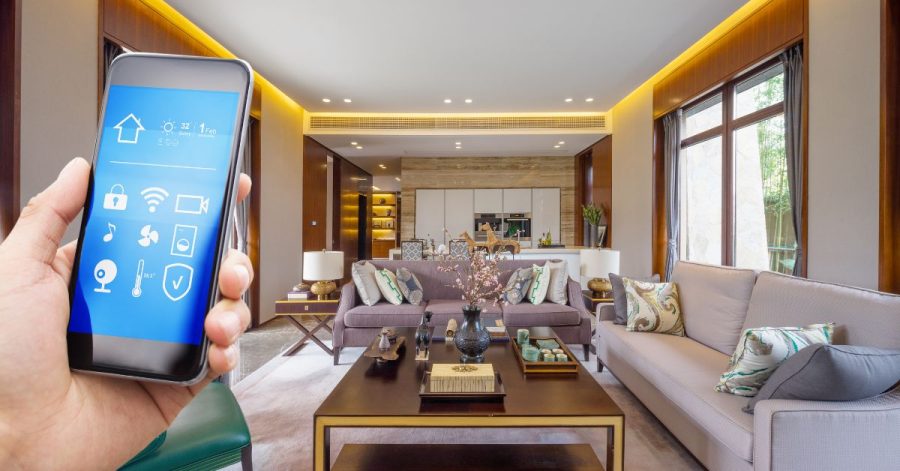In the last few years, we have watched smart home technologies transform traditional houses into connected and efficient living spaces. By integrating smart devices and appliances through the Internet of Things (IoT), smart homes enhance convenience, energy efficiency, and security, among other benefits However, such technologies always have their pros and cons.
For architects and urban planners, smart homes already offer a glimpse into the future – and some of them are delivering on a promise that was made in sci-fi movies and TV shows years and decades ago.
“As a sci-fi fan, I have been fascinated by the homes of the future since I was a child, and the first association of the smart home that I can think of is Star Trek: The Next Generation, where one can enter the crew’s room through the sliding door of the sensor with face and voice recognition. The lights were turned on with voice commands, and the room also had an office known as a replicator, where you can order any food and drink of your choice and it will generate it,” Skopje-based urban planning specialist Goran Chalovski recalls.

According to him, while smart homes also represent a type of a utopian way of looking at tech, in the long run the technology looks pretty promising.
“As an architect, that utopian view of a smart home fascinates me and I think that is definitely the right way to do it. This is the way the technology should develop, and tasks such as lighting, adjusting the temperature of the windows, storing food, music as well as the ability to create a pleasant atmosphere if the apartment feels that there is a need for it according to the current mental state of the user,” Chalovski tells The Recursive.
Nevertheless, like any technological advancement, smart homes also come with certain challenges. In this article, we will explore the pros and cons of having a smart home and offer our insights for all of those that are considering adopting this cutting-edge technology.
The pros of having a smart home
1.1. Energy efficiency
The drive for sustainability and energy conservation has become more critical than ever, and smart homes play a significant role in achieving these goals. Smart thermostats are one of the standout features of a smart home, allowing homeowners to program and remotely control their heating and cooling systems. These devices can automatically adjust the temperature based on occupancy patterns, time of day, or even the weather forecast.

As a result, unnecessary energy consumption is minimized, leading to substantial energy savings and reduced carbon footprint. Moreover, smart lighting systems contribute to energy efficiency by enabling users to control and schedule their lights remotely. Homeowners can turn off lights in empty rooms or set dimming levels to conserve electricity. Some smart lighting solutions can even adjust the color temperature to create the ideal ambiance for various activities, which enhances energy efficiency and improves user comfort.
1.2. Ease of access
Gone are the days of manually operating every household device. With smart homes, homeowners gain the convenience of central control from their smartphones or tablets. A smart home hub serves as the central point of access for all smart devices, allowing users to manage everything from lighting and security to entertainment and appliances with a single app.
Voice-activated smart assistants like Google Home and Amazon Echo add another layer of convenience, enabling users to control their smart home devices using voice commands.
Whether you are at work, on vacation, or simply relaxing on the couch, you have the power to monitor and control your home with ease, bringing a new level of comfort and convenience to everyday life.

1.3. Customization for user comfort
In a smart home, customization is key. Each homeowner has unique preferences for their living space, and smart technology allows them to tailor their environment accordingly. Smart thermostats can learn household routines and temperature preferences, automatically adjusting settings to ensure optimal comfort throughout the day.
Smart lighting systems also offer an array of customization options, including the ability to create different lighting scenes for various occasions. Thus, homeowners can program lights to gently wake them up in the morning or set the perfect ambiance for a cozy movie night.
With the use of smart plugs and smart switches, even non-smart appliances can be integrated into the smart home system. This level of customization ensures that the home environment aligns perfectly with the homeowner’s preferences and lifestyle.
1.4. Smart home security
Home security is a top priority for homeowners, and smart home technology provides a comprehensive solution. Smart security systems offer features such as smart cameras, door and window sensors, smart smoke detectors, and more. These interconnected devices allow homeowners to keep a watchful eye on their property, both inside and out.
Smart cameras, often equipped with high-resolution video and night vision capabilities, provide real-time surveillance and can send instant notifications of suspicious activity. Door and window sensors alert homeowners if a breach is detected, ensuring prompt response to potential threats. Smart smoke detectors are equipped with features like self-monitoring and the ability to alert authorities in case of emergencies, offering an additional layer of safety.

1.5. Convenience for the elderly and differently-abled
Smart home technology has the potential to significantly improve the lives of elderly and differently-abled individuals. For those with mobility challenges, the ability to control devices through voice commands or a smartphone app reduces the need to physically move around the house. This enhanced accessibility promotes independence and allows them to manage tasks that may have been difficult or impossible otherwise.
Voice-activated smart assistants, such as Amazon Echo or Google Home, serve as virtual companions, assisting with daily tasks, providing information, and even offering entertainment. Moreover, smart home automation ensures that essential functions like lighting, heating, and security are easily manageable, allowing elderly and differently-abled individuals to age in place comfortably.
The cons of having a smart home
2.1. Installation cost
One of the primary deterrents for homeowners considering smart home technology is the initial cost of installation. While prices have gradually reduced over the years, equipping an entire house with smart devices and a smart home system can still be a significant investment. Smart devices, appliances, and a smart home hub can add up, and professional installation services may also incur additional costs.
“Homes are becoming more and more unaffordable, and with the current prices and people’s salaries, they are just passed on as a legacy. In order to reach the utopian level of the home of the utopian future, homes must first become much more accessible to everyone, as well as built with much better materials. Additionally, the technology of smart homes which should improve every aspect of everyday life and the quality of life in homes and to satisfy the criteria of today, as well as tomorrow. The technology is still complicated to install, it isn’t as user-friendly as it’s supposed to be, and it’s quite expensive,” Chalovski adds.
Despite the initial expense however, he points out that it is essential to consider this as a long-term investment. Energy savings and convenience offered by smart home technology often lead to cost savings over time, making the initial investment worthwhile.
2.2. Internet dependency
Smart homes rely heavily on a stable and reliable internet connection for seamless functionality. Many smart devices and the central smart home hub require an internet connection to communicate and process commands.
However, internet outages, whether due to technical issues or disruptions in service, can temporarily disable some smart home functionalities. In turn, this dependence on the internet can be frustrating, especially during critical moments, such as when you need to access security camera footage remotely.
To mitigate the impact of internet outages, homeowners can consider having backup solutions in place, such as local control options or using smart devices that can function independently of the internet for essential tasks.

2.3. Privacy concerns
Smart home technology collects data to optimize user experiences and improve functionality. This data may include information on usage patterns, preferences, and even user habits. While this data is primarily used to enhance user comfort and efficiency, privacy concerns may arise.
In the smart technology industry, data privacy is a significant topic of discussion – as there have been plenty of examples of data breaches and vulnerabilities in smart devices, potentially leading to unauthorized access to personal information. To address these concerns, homeowners should invest in reputable and secure smart devices from trusted manufacturers. Regularly updating firmware and using strong passwords are also essential steps to safeguarding personal data.
2.4. Complicated user interfaces
For individuals who are not tech-savvy, managing multiple smart devices and apps can be overwhelming. The sheer number of smart features, settings, and apps associated with smart home systems can lead to confusion and difficulty in operating the technology effectively.
A complicated user interface can hinder the seamless integration and enjoyment of smart home technologies. To overcome this challenge, manufacturers should focus on creating intuitive and user-friendly interfaces that make smart home technology accessible to all users.
Conclusion
Smart homes present a host of advantages that enhance convenience, energy efficiency, security, and accessibility. The ability to control devices from anywhere, customize the living environment, and improve home security are significant benefits that smart home technology brings to homeowners.
“In the long run, smart homes are definitely the way technology should be done. Maybe each home should also consider featuring some sort of AI, which would care and maintain all functions for the well-being of its users,” Chalovski tells The Recursive.
However, it is essential to acknowledge the challenges and potential drawbacks associated with smart homes, such as installation costs, internet dependency, privacy concerns, and user interface complexities. By considering both the advantages and disadvantages, homeowners can make informed decisions and embrace smart home technology in a manner that aligns with their needs and preferences.








